History
The history of watches began in 16th century Europe, where watches evolved from portable spring-driven clocks, which first appeared in the 15th century.
The watch which developed from the 16th century to the mid 20th century was a mechanical device, powered by winding a mainspring which turned gears and then moved the hands, and kept time with a rotating balance wheel. The invention of the quartz watch in the 1960s, which ran on electricity and kept time with a vibrating quartz crystal, proved a radical departure for the industry. During the 1980s quartz watches took over the market from mechanical watches, an event referred to as the "quartz crisis". Although mechanical watches still sell at the high end of the market, the vast majority of watches now have quartz movements.
One account of the origin of the word "watch" is that it came from the Old English word woecce which meant "watchman", because it was used by town watchmen to keep track of their shifts. Another says that the term came from 17th century sailors, who used the new mechanisms to time the length of their shipboard watches (duty shifts).
The watch which developed from the 16th century to the mid 20th century was a mechanical device, powered by winding a mainspring which turned gears and then moved the hands, and kept time with a rotating balance wheel. The invention of the quartz watch in the 1960s, which ran on electricity and kept time with a vibrating quartz crystal, proved a radical departure for the industry. During the 1980s quartz watches took over the market from mechanical watches, an event referred to as the "quartz crisis". Although mechanical watches still sell at the high end of the market, the vast majority of watches now have quartz movements.
One account of the origin of the word "watch" is that it came from the Old English word woecce which meant "watchman", because it was used by town watchmen to keep track of their shifts. Another says that the term came from 17th century sailors, who used the new mechanisms to time the length of their shipboard watches (duty shifts).
One account of the origin of the word "watch" is that it came from the Old English word woecce which meant "watchman", because it was used by town watchmen to keep track of their shifts. Another says that the term came from 17th century sailors, who used the new mechanisms to time the length of their shipboard watches (duty shifts).
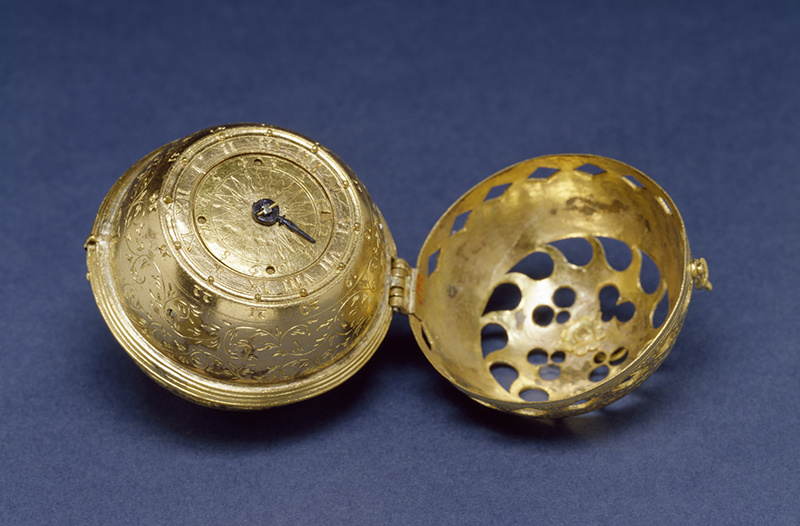
The first timepieces to be worn, made in the 16th century beginning in the German cities of Nuremberg and Augsburg, were transitional in size between clocks and watches. Portable timepieces were made possible by the invention of the mainspring in the early 15th century. Nuremberg clockmaker Peter Henlein (or Henle or Hele) (1485-1542) is often credited as the inventor of the watch. He was one of the first German craftsman who made "clock-watches" (taschenuhr), ornamental timepieces worn as pendants, which were the first timepieces to be worn on the body. His fame is based on a passage by Johann Cochläus in 1511:
1500
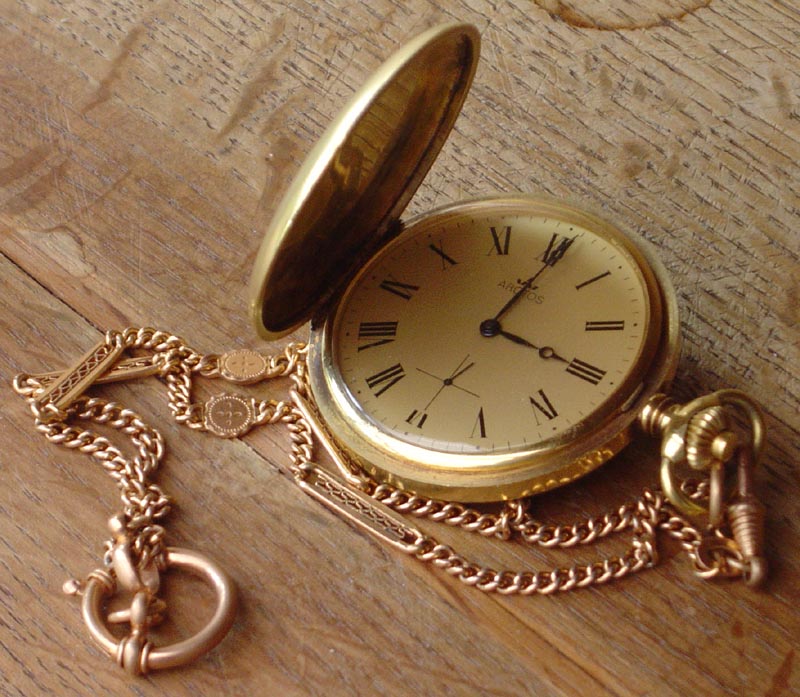
Styles changed in the 17th century and men began to wear watches in pockets instead of as pendants (the woman's watch remained a pendant into the 20th century). This is said to have occurred in 1675 when Charles II of England introduced waistcoats. This was not just a matter of fashion or prejudice; watches of the time were notoriously prone to fouling from exposure to the elements, and could only reliably be kept safe from harm if carried securely in the pocket. To fit in pockets, their shape evolved into the typical pocketwatch shape, rounded and flattened with no sharp edges. Glass was used to cover the face beginning around 1610. Watch fobs began to be used, the name originating from the German word fuppe, a small pocket. Later in the 1800s Prince Albert, the consort to Queen Victoria, introduced the 'Albert chain' accessory, designed to secure the pocket watch to the man's outergarment by way of a clip. The watch was wound and also set by opening the back and fitting a key to a square arbor, and turning it.
1600
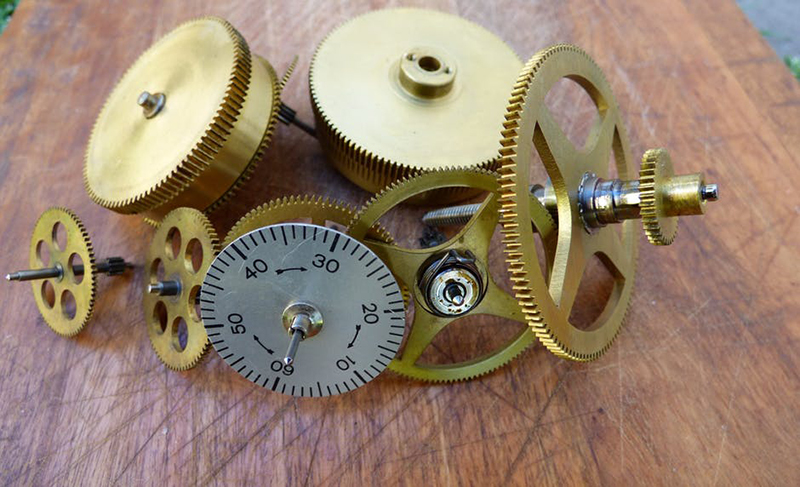
A great leap forward in accuracy occurred in 1657 with the addition of the balance spring to the balance wheel, an invention disputed both at the time and ever since between Robert Hooke and Christiaan Huygens. Prior to this, the only force limiting the back and forth motion of the balance wheel under the force of the escapement was the wheel's inertia. This caused the wheel's period to be very sensitive to the force of the mainspring. The balance spring made the balance wheel a harmonic oscillator, with a natural 'beat' resistant to disturbances. This increased watches' accuracy enormously, reducing error from perhaps several hours per day to perhaps 10 minutes per day, resulting in the addition of the minute hand to the face from around 1680 in Britain and 1700 in France. The increased accuracy of the balance wheel focused attention on errors caused by other parts of the movement, igniting a two century wave of watchmaking innovation.
1657

The Enlightenment view of watches as scientific instruments brought rapid advances to their mechanisms. The development during this period of accurate marine chronometers to determine longitude during sea voyages produced many technological advances that were later used in watches. It was found that a major cause of error in balance wheel timepieces was changes in elasticity of the balance spring with temperature changes. This problem was solved by the bimetallic temperature compensated balance wheel invented in 1765 by Pierre Le Roy and improved by Thomas Earnshaw. This type of balance wheel had two semicircular arms made of a bimetallic construction. If the temperature rose, the arms bent inward slightly, causing the balance wheel to rotate faster back and forth, compensating for the slowing due to the weaker balance spring. This system, which could reduce temperature induced error to a few seconds per day, gradually began to be used in watches over the next hundred years.
1760

The lever escapement, invented by Thomas Mudge in 1759 and improved by Josiah Emery in 1785, gradually came into use from about 1800 onwards, chiefly in Britain; it was also adopted by Abraham-Louis Breguet, but Swiss watchmakers (who by now were the chief suppliers of watches to most of Europe) mostly adhered to the cylinder until the 1860s. By about 1900, however, the lever was used in almost every watch made. In this escapement the escape wheel pushed on a T shaped 'lever', which was unlocked as the balance wheel swung through its centre position and gave the wheel a brief push before releasing it. The advantages of the lever was that it allowed the balance wheel to swing completely free during most of its cycle; due to 'locking' and 'draw' its action was very precise; and it was self-starting, so if the balance wheel was stopped by a jar it would start again.
1800

At Vacheron Constantin, Geneva, Georges-Auguste Leschot (1800–1884), pioneered the field of interchangeability in clockmaking by the invention of various machine tools.[14] In 1830 he designed an anchor escapement, which his student, Antoine Léchaud, later mass-produced. He also invented a pantograph, allowing some degree of standardisation and interchangeability of parts on watches fitted with the same calibre.
The British had predominated in watch manufacture for much of the 17th and 18th centuries, but maintained a system of production that was geared towards high quality products for the elite.[15] Although there was an attempt to modernise clock manufacture with mass production techniques and the application of duplicating tools and machinery by the British Watch Company in 1843, it was in the United States that this system took off. Aaron Lufkin Dennison started a factory in 1851 in Massachusetts that used interchangeable parts, and by 1861 was running a successful enterprise incorporated as the Waltham Watch Company.[16]
1850

Some people say the world's first wristwatch was created by Abraham-Louis Breguet for Caroline Murat, Queen of Naples, in 1810.
The concept of the wristwatch goes back to the production of the very earliest watches in the 16th century. Elizabeth I of England received a wristwatch from Robert Dudley in 1571, described as an arm watch. From the beginning, wristwatches were almost exclusively worn by women, while men used pocketwatches up until the early 20th century. By the mid nineteenth century, most watchmakers produced a range of wristwatches, often marketed as bracelets, for women.
1920

The first generation of electric-powered watches came out during the 1950s. These kept time with a balance wheel powered by a solenoid, or in a few advanced watches that foreshadowed the quartz watch, by a steel tuning fork vibrating at 360 Hz, powered by a solenoid driven by a transistor oscillator circuit. The hands were still moved mechanically by a wheel train. In mechanical watches the self winding mechanism, shockproof balance pivots, and break resistant 'white metal' mainsprings became standard. The jewel craze caused 'jewel inflation' and watches with up to 100 jewels were produced.
1950
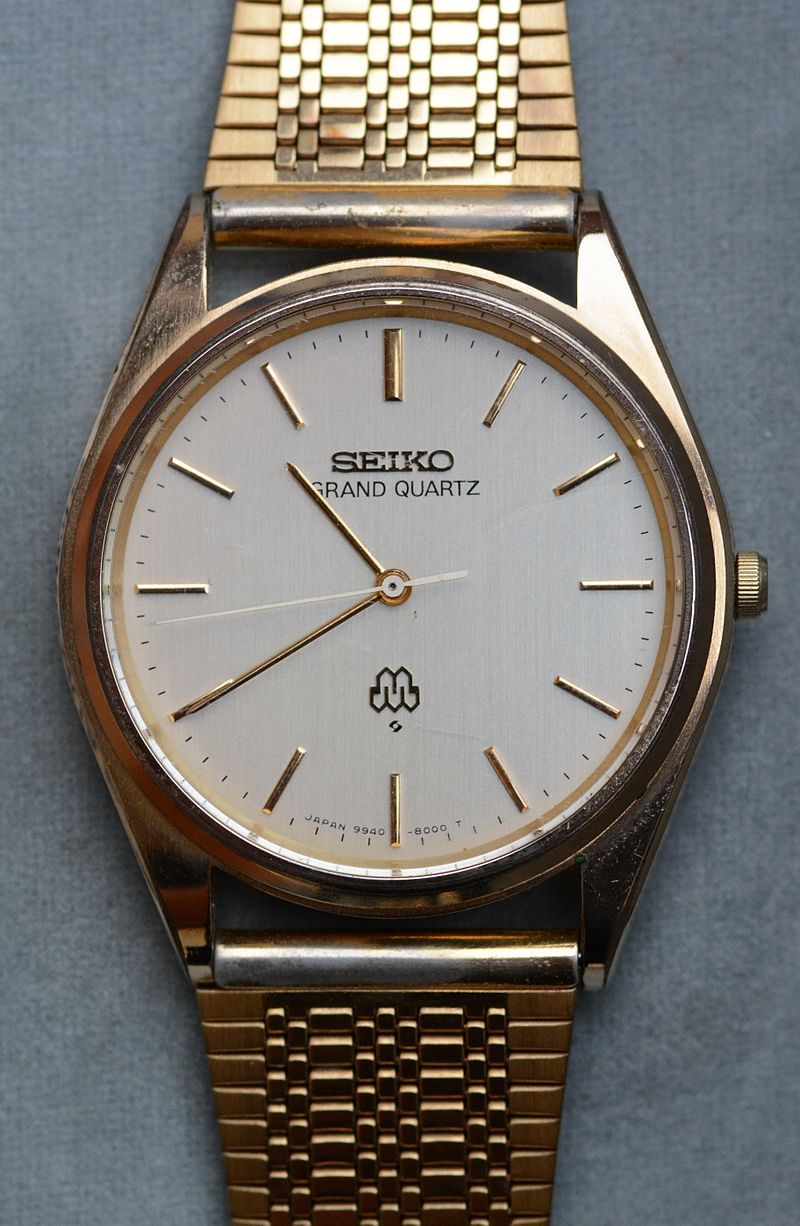
In 1959 Seiko placed an order with Epson (a daughter company of Seiko and the 'brain' behind the quartz revolution) to start developing a quartz wristwatch. The project was codenamed 59A. By the 1964 Tokyo Summer Olympics, Seiko had a working prototype of a portable quartz watch which was used as the time measurements throughout the event.
The first quartz watch to enter production was the Seiko 35 SQ Astron, which hit the shelves on 25 December 1969, which was the world's most accurate wristwatch to date. Since the technology having been developed by contributions from Japanese, American and Swiss,[30] nobody could patent the whole movement of the quartz wristwatch, thus allowing other manufacturers to participate in the rapid growth and development of the quartz watch market, This ended — in less than a decade — almost 100 years of dominance by the mechanical wristwatch legacy.
1970

In 1990, Junghans offered the first radio-controlled wristwatch, the MEGA 1. In this type, the watch's quartz oscillator is set to the correct time daily by coded radio time signals broadcast by government-operated time stations such as JJY, MSF, RBU, DCF77, and WWVB,[33][34] received by a radio receiver in the watch. This allows the watch to have the same long-term accuracy as the atomic clocks which control the time signals. Recent models are capable of receiving synchronization signals from various time stations worldwide.
1990

In 2013 Bathys Hawaii[35] introduced their Cesium 133 Atomic Watch[36][37][38] the first watch to keep time with an internal atomic clock. Unlike the radio watches described above, which achieve atomic clock accuracy with quartz clock circuits which are corrected by radio time signals received from government atomic clocks, this watch contains a tiny cesium atomic clock on a chip. It is reported to keep time to an accuracy of one second in 1000 years.
2013
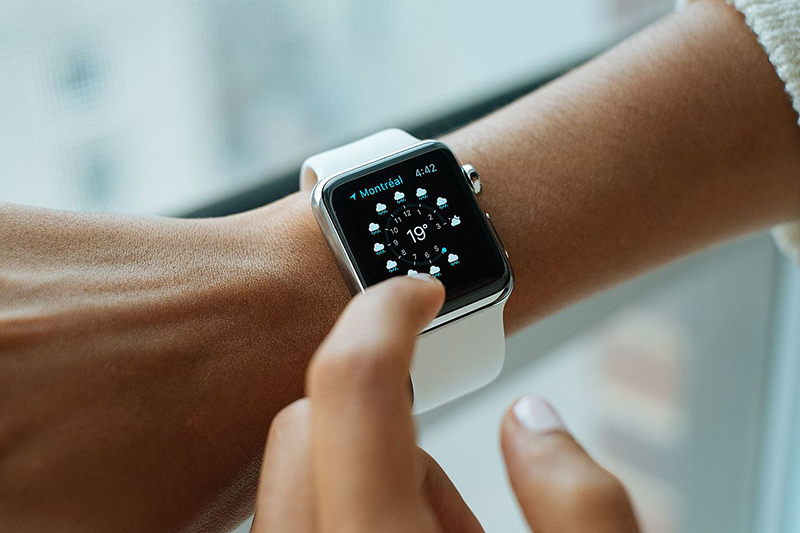
On 9 September 2014, Apple Inc. announced its first smartwatch called Apple Watch to be released in early 2015. On 24 April 2015, Apple Watch began shipping across the world. Apple’s first foray into wearable technology was met with considerable criticism during the pre-launch period, with many early technology reviews citing issues with battery life and hardware malfunctions. However, others praised Apple for creating a potentially fashionable device that can compete with "traditional watches," not just the smartwatch industry in general. The watch only turns on when activated (either by lifting one's wrist, touching the screen, or pressing a button). On 29 October 2014, Microsoft announced the Microsoft Band, a smart fitness tracker and the company's first venture into wrist-worn devices since SPOT (Smart Personal Objects Technology) a decade earlier. The Microsoft Band was released at $199 the following day, on 30 October 2014.
2014